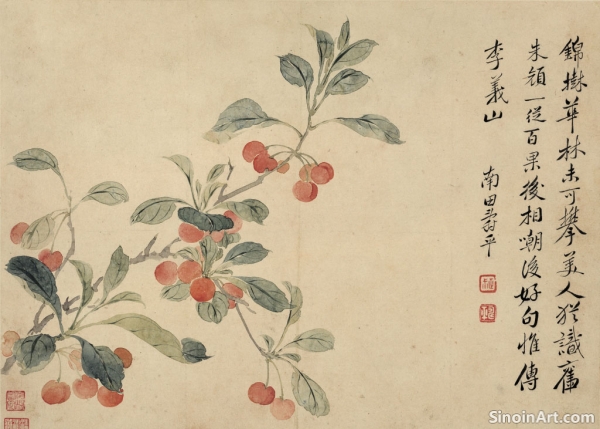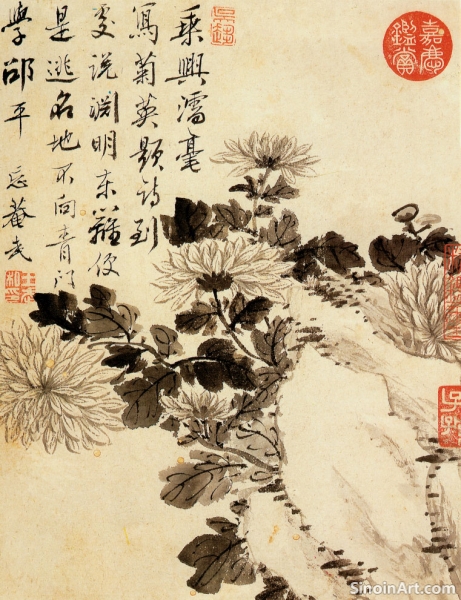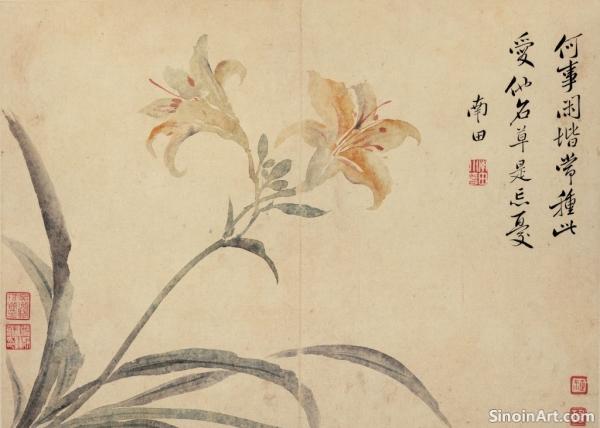The Spiritual Aspects of Gongbi Painting
|
Beyond its aesthetic beauty and technical complexity, Gongbi painting carries a deeply spiritual dimension, inviting both the artist and the viewer into a realm of contemplation and reflection. The meticulous process of creating a Gongbi artwork can be seen as a form of meditation, fostering a sense of inner peace and mindfulness.  The patience and precision required to execute the intricate details of a Gongbi painting demand a level of focus and concentration that is akin to meditative practice. The artist must be completely present in the moment, allowing their hand to be guided by a sense of intention and awareness. This process is not merely about replicating an image but about engaging in a deeper relationship with the subject matter.  The traditional subjects often depicted in Gongbi painting, such as birds, flowers, and landscapes, also contribute to its spiritual aspect. These natural motifs are seen as symbols of harmony and balance, reflecting the Daoist principle of living in accordance with the natural order. The act of painting these subjects can be a way to connect with the inherent beauty and spiritual essence of the world around us.  The emphasis on contemplation and observation within Gongbi painting extends to the viewer as well. The detailed imagery and the carefully rendered compositions invite viewers to slow down, to examine each element closely, and to consider the deeper meanings embedded within the artwork. It is an invitation to connect with the art on both an aesthetic and emotional level. The spiritual dimension of Gongbi painting underscores its importance not just as an art form but also as a practice that fosters personal growth and awareness. It offers a pathway to inner peace, creativity, and a deeper connection with the world around us. The artistic process is a spiritual one, that can be seen in its beauty and precision. |
Tag : Spiritual Gongbi, mindfulness in art, meditative art, Chinese art spirituality, contemplation in painting
Related information
- Gongbi and the Art of Botanical Illustration
- Gongbi Portraiture: Capturing the Essence of the Subject
- Gongbi and the Depiction of Architecture
- Collecting Gongbi: Insights and Considerations for Art Enthusiasts
- Gongbi Painting and the Depiction of Clouds and Mist
This article explores the relationship between Gongbi painting and botanical illustration, highlighting the meticulous detail, precise linework, accurate color layering, and how these techniques contribute to both artistic beauty and scientific accuracy in the depiction of plants.
This article explores Gongbi portraiture, highlighting its meticulous detail, precise use of line, delicate color layering, and its aim to capture not only the physical likeness of the subject but also their inner character and essence.
This article explores the depiction of architecture in Gongbi painting, highlighting the meticulous detail, historical accuracy, use of perspective, and interplay of light and shadow, showcasing how this art form captures both the physical appearance and cultural significance of buildings.
This article provides insights for art enthusiasts interested in collecting Gongbi paintings, focusing on the importance of brushwork quality, authenticity, subject matter, composition, and proper care for these delicate artworks.
This article explores the depiction of clouds and mist in Gongbi painting, highlighting the techniques used to create a sense of depth, luminosity, and atmosphere, and how the subtle variations in color and tone evoke a sense of mystery and serenity.